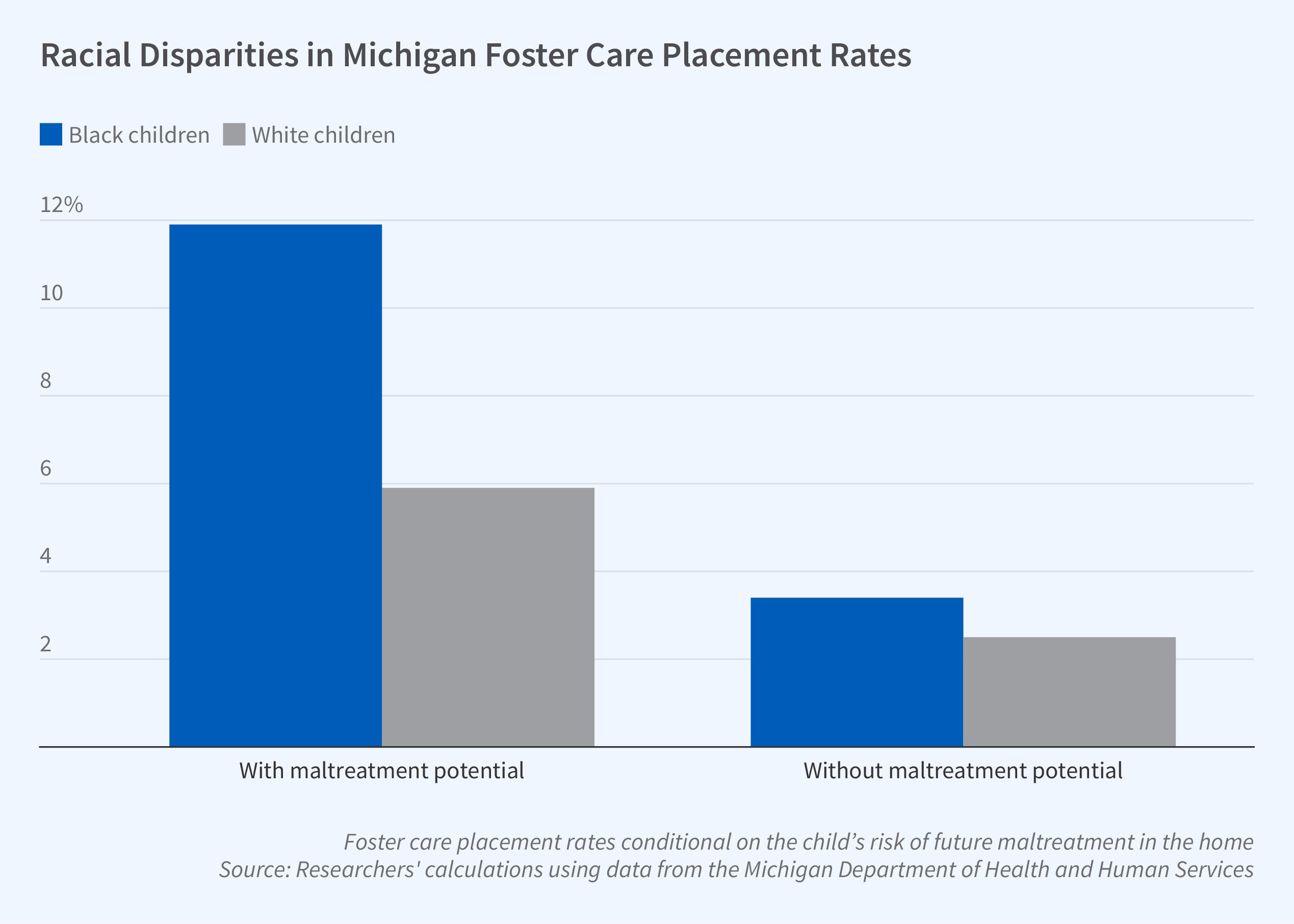Racial Disparities in Foster Care Placement

In the United States, 5 percent of all children spend some time in foster care and 37 percent are involved in a maltreatment investigation by a child protective services agency by age 18. The percentage of Black children involved in such investigations is nearly double the percentage of White children, and Black children are also twice as likely as White children to spend time in foster care.
A new study examines whether these racial disparities reflect differences in underlying need for foster care placement, or discrimination by child maltreatment investigators.
In Racial Discrimination in Child Protection (NBER Working Paper 31490), Jason Baron, Joseph J. Doyle Jr., Natalia Emanuel, Peter Hull, and Joseph P. Ryan analyze data from the Michigan Department of Health and Human Services for the period January 2008 to June 2017. Their dataset includes 217,704 maltreatment investigations of 181,928 children by 699 investigators.
Data from Michigan suggest that Black children are placed in foster care at higher rates than White children with identical risk of future maltreatment in the home.
To understand whether placement disparities reflect differences in underlying need or discrimination, the authors compare the foster care placement rates of White and Black children with identical potential for future maltreatment if left at home — which they proxy for via another maltreatment investigation in the home within six months. The key challenge for this comparison is that maltreatment potential is unobserved for children who were placed in foster care, so it cannot be conditioned on directly. The authors overcome this missing data problem by leveraging the quasi-random assignment of child maltreatment investigators in Michigan, with an “identification at infinity” strategy.
The authors find that Black children are 1.7 percentage points (50 percent) more likely to be placed in foster care than White children conditional on maltreatment potential. The interpretation of this finding is complex: it could indicate “over-placement” of Black children in foster care, or “under-placement” of White children.
The researchers show that the conditional disparity is entirely driven by high-risk cases — those in which children would face subsequent maltreatment if left in the home. Specifically, they find that 12 percent of Black children are placed in foster care in such cases, compared to 6 percent of White children. In contrast, placement disparities are small and statistically insignificant in low-risk cases (where children face no future maltreatment potential). These findings suggest that while Black children may be placed in foster care at higher rates than White children, White children may be harmed by “under-placement” in high-risk cases.
The study also shows that a key contributor to these racial disparities is own-race bias in high-risk cases: White investigators give more latitude to White parents than they do to Black parents. The same type of bias emerges for Black investigators, who are more lenient toward Black parents. But since most investigators are White, this own-race bias results in higher foster care placement rates for Black children in high-risk cases.
—Leonardo Vasquez
Hull gratefully acknowledges funding through the National Science Foundation (Award #2119849).


